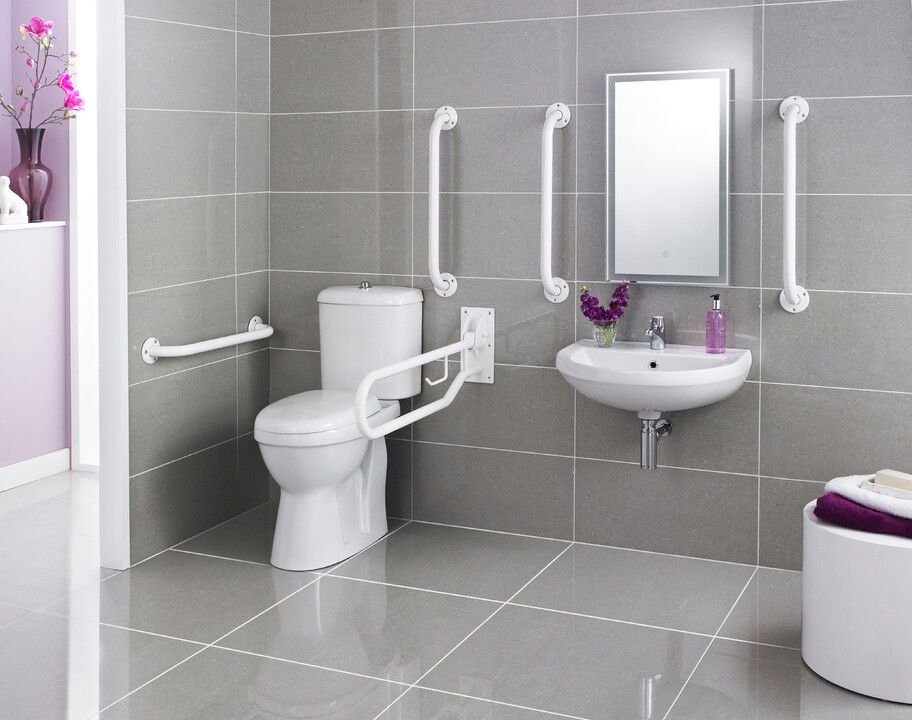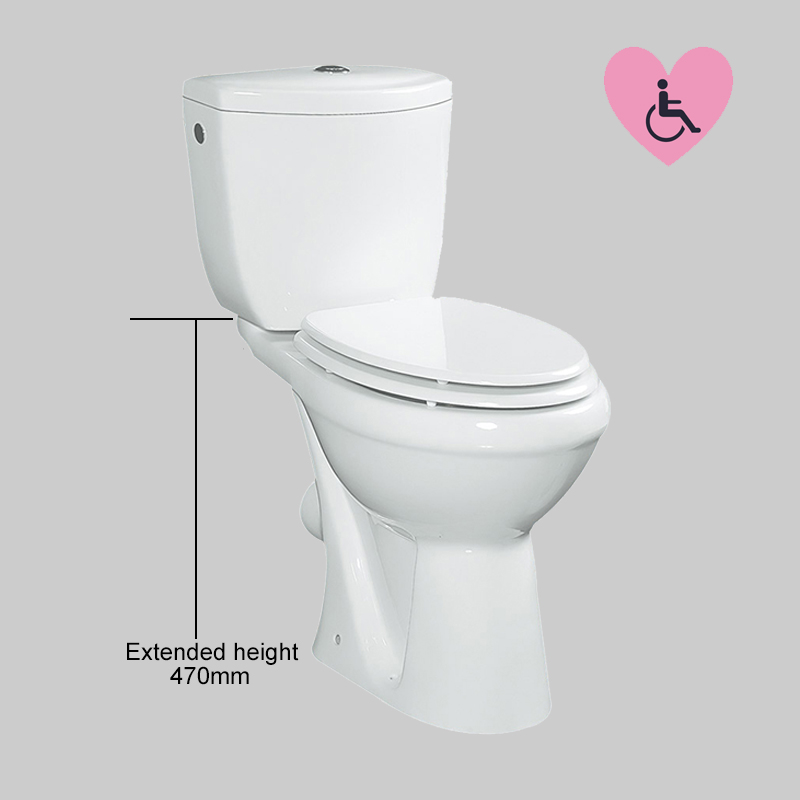When fitting a disabled toilet/ (increasingly known as an “accessible toilet”), it helps to know exactly what the requirements are in terms of the law and accessibility. Find out everything you need to know in this expert article.
If you’re about to redesign your existing leisure business premises or even move and establish yourself in a new location altogether, you’ll have to consider toilets at some point.
If these new facilities are being used for a restaurant, pub, café, theatre or similar, then there are government guidelines to adhere to. These are along the lines of how many toilets there should be per diner, member of the public, etc. Add disabled facilities, that’s what we’ll go into detail on in this very post..
What is a Disabled Toilet?
A disabled toilet, commonly labeled an accessible toilet, enables differently-abled people to gain easy access to facilities that regular toilets also offer. The major differences, however, between a regular toilet and a disabled toilet are in the layout of the toilet, the available space, the flooring, the hand-grip equipment, the lighting, the alarm system, etc.
This toilet, above all else, removes the disabling barriers and limitations that exist for people with disabilities in regular toilets.
The law on disabled provision
The guidance on providing handicapped toilet facilities outside the home can be found under the UK Government’s Access to and use of buildings: Approved Document M.
Owners of buildings are required to provide “reasonable provision” for disabled customers. If they don’t, effectively they shouldn’t be given the go-ahead to start developing by the local authority’s Building Control team.
Just because your business has been given the go-ahead though, it doesn’t mean you can pass the buck if a person with disabilities decides to take you to court in breach of the 2010 Equality Act—i.e. you haven’t provided similar toilet standards for him or her, as you did a non-disabled individual.
He or she would then have to prove that you didn’t take “reasonable” steps to provide a similar toilet experience with that of a non-disabled person.

Display of handicapped toilet space
What it means by “reasonable”
It may actually be easier to explain this part of the law by citing what is not a “reasonable” excuse. For instance, it wouldn’t be good enough for a business owner to tell the court that he or she simply ran out of money and couldn’t afford to put in a handicapped toilet(since the toilet should have been incorporated in their initial plans).
The same applies to the excuse of a lack of room (this may be the case for existing premises but not for new-builds or remodeled areas). And, even so, in the case of the former, a property assessment would have to be shown to prove that the owner did indeed take the business of providing inodoros altos para discapacitados provision seriously in the first place.
Meanwhile, even businesses which do provide a inodoros altos para discapacitados can often be guilty of “storing” other items in there, such as ladders, electrical equipment such as photocopiers and old computers, and even additional stock. This can make access difficult for a disabled individual—and does nothing for their self-esteem either!
Required needs of a disabled toilet
Space around the toilet bowl
There are many aspects to fitting a inodoros altos para discapacitados that non-disabled individuals may not even consider. Some people who use a wheelchair, for instance, may need 1 or 2 carers to help lift them onto the toilet seat. This means there should be adequate room around the toilet bowl for the carers to manoeuvre in comfort. This certainly isn’t always the case—especially since many toilet bowls are located in the corner of the room in order to save space.
The recommended size of a handicap toilet is a minimum of 2200mm x 1500mm. This is also designed to take into account items which project into the room, like a baby changing facility or radiator, which would reduce the space available for a wheelchair and several individuals to move around in.
Easy-to-use facilities
Paddle-style toilet flushes which move down with minimal effort are best for those with limited muscle movement, while taps with grip levels provide a similar easy-use function. Soap dispensers with a similar level grip or which are heat triggered when a hand is underneath are also aimed at making life easier for a disabled individual.
Grab rails
Having assistance for balancing and moving is an absolute must in handicap toilet provision—and grab rails are excellent for this. They could be in the form of rails at the side of a toilet bowl, that lift up and down when needed, or a permanent grab rail fixed to the wall.
Comfort Height adjustable Toilet facilities
The toilet bowl, bathroom basin and soap dispenser etc., should be lower in height than in a standard toilet (or at least height-adjustable). In this way, they can be “just the Comfort height” for someone in a wheelchair.
An alarm system
In the event something goes wrong when an individual with disabilities is in the toilet on their own, they must be able to contact help from outside.
Outward opening doors
A door that opens outwards is much easier to use from inside the toilet—especially if it has a large horizontal bar across it to push or to close the door.

Outwards opening doors of comfort height handicapped toilet
Shop commercial bathrooms and Independent Living bathrooms
At (fohomeceramics.com), you’ll find our comprehensive and high quality range of commercial bathroom solutions. Simply click on the banner below to begin.

